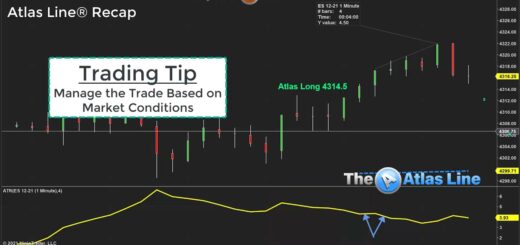Deciphering Price Action: Mastering the ABC Method for Traders
Welcome to our latest blog post, where we’re about to unravel the secrets of price action trading. Whether you’re a NinjaTrader aficionado, a TradeStation enthusiast, or a TradingView devotee, the principles we’re about to discuss apply universally.
Today, we’re delving into the ABC method—a technique that demystifies price action, making it accessible and effective for traders of all levels. So, let’s embark on this educational journey and learn how to crack the price action code.
Unveiling the ABC Method
We’re here to empower you with knowledge that goes beyond mere trading signals. It’s crucial to comprehend the mechanics behind the tools you use. Our focus will be on understanding the ABC software and the Trade Scalper, and more importantly, how they function in real trading scenarios.
Step 1: Establishing Ground with ATR: At the core of assessing market volatility is the Average True Range (ATR) indicator. ATR serves as your compass, guiding you toward the most appropriate timeframes for your trading strategy. In the context of a five-minute chart, ATR with a setting of four is generally effective. It adapts to market conditions, helping you identify the optimal timeframe to navigate price action.
Step 2: Deconstructing the Trading Day into A, B, and C: Let’s deconstruct the trading day into three distinctive phases: A, B, and C. Each segment mirrors the varying market dynamics that unfold over the course of a trading session.
- Segment A (Intense Volatility): Right from the market open, it’s a whirlwind of activity. Volatility peaks, and candlestick movements are pronounced, reflecting rapid price shifts.
- Segment B (Transition): As the day progresses, the market often shifts to a more balanced state. This phase signifies traders adjusting their positions and the establishment of potential trends.
- Segment C (Closing Momentum): The final stretch of the trading day sees renewed activity. Traders make final moves before closure, creating opportunities worth considering.
Applying the ABC Method: Now that we’ve dissected the components, let’s put them into action. Armed with insights from ATR and an understanding of the three market segments, you can tailor your trading strategy to align with the market’s current state. In high volatility (Segment A), opt for shorter timeframes for quick scalping. During transitions (Segment B), leverage slightly longer timeframes to ride established trends. As the day winds down (Segment C), evaluate potential last-minute moves.
Conclusion: Equipped to Decode Price Action
This isn’t just another trading lesson; it’s a key to unlocking the mysteries of price action. By grasping the ABC method, you gain the ability to navigate the market’s ever-changing rhythms. Trading is a blend of art and science, and with the ABCs—ATR, Breakdown, and Context—in your toolkit, you’re positioned to make well-informed decisions.
So, the next time you’re deciphering a chart, remember the ABCs you’ve learned here. Armed with this knowledge, you’re ready to take on the intricate world of price action trading with confidence. Happy trading, and may the ABCs lead you to success!




